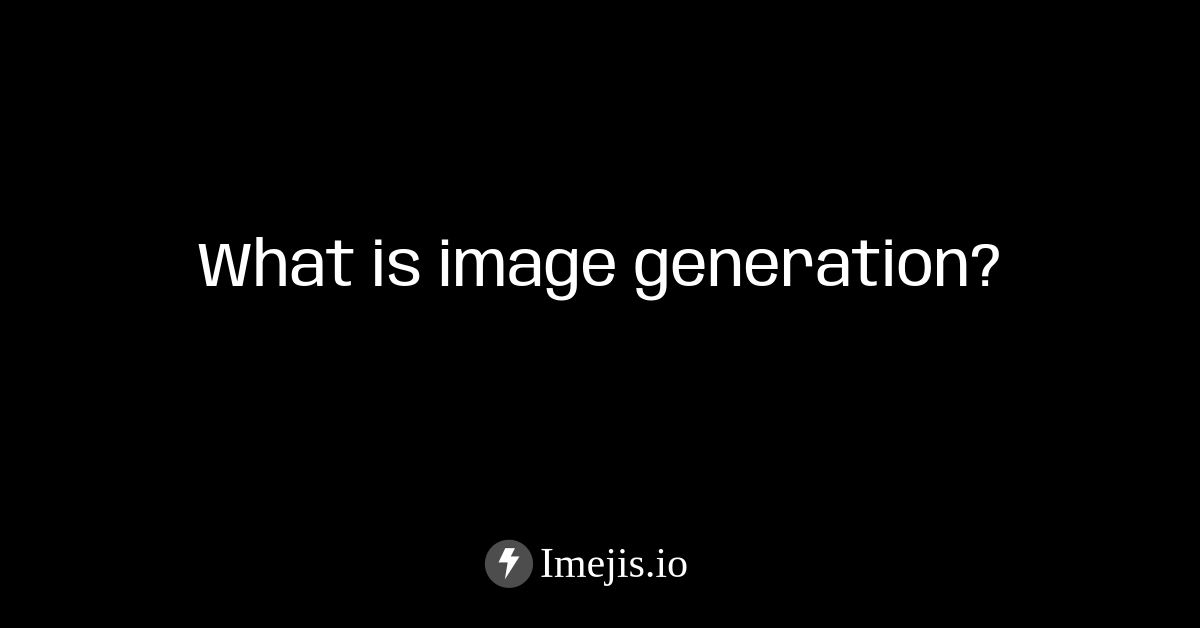What is Image Generation?

In today's digital world, images play a crucial role in capturing attention, conveying messages, and engaging audiences. From social media posts to e-commerce product listings, images have become an essential component of effective communication. But have you ever wondered how these images are created? That's where image generation comes into play.
What is Image Generation? Image generation refers to the process of creating images using various techniques and tools. It involves generating visual content from scratch or modifying existing images to suit specific requirements. Image generation can be achieved through manual design using graphic editing software or through automated methods using algorithms and machine learning.
Types of Image Generation: There are different types of image generation techniques used to create images for various purposes. Let's explore a few of them:
-
Manual Design: This traditional approach involves using graphic design software like Adobe Photoshop or Canva to create images. Designers manually create visual elements, add text, apply effects, and manipulate various parameters to achieve the desired look and feel.
-
Algorithmic Generation: Algorithmic image generation utilizes mathematical algorithms and rules to create images. These algorithms define patterns, shapes, colors, and other characteristics to generate images automatically. Fractal art and procedural textures are examples of algorithmic image generation.
-
Machine Learning (ML) Based Generation: ML-based image generation leverages the power of deep learning algorithms and neural networks. Generative Adversarial Networks (GANs) and Variational Autoencoders (VAEs) are commonly used techniques in ML-based image generation. These models are trained on large datasets and can generate realistic and diverse images based on learned patterns.
Applications of Image Generation: Image generation finds application in various fields and industries. Here are a few notable examples:
-
E-commerce: Image generation plays a vital role in creating product images for e-commerce platforms. Dynamic elements such as price tags, promotional banners, and discount labels can be added to showcase products effectively.
-
Digital Marketing and Advertising: Marketers use image generation to create visually appealing graphics for online advertisements, social media campaigns, and email marketing. Personalized images can be generated to target specific audience segments, enhancing engagement and conversion rates.
-
Art and Design: Artists and designers explore image generation techniques to create unique and abstract visuals. These techniques enable them to experiment with shapes, colors, and compositions, fostering creativity and pushing artistic boundaries.
-
Simulation and Virtual Reality: Image generation is utilized in simulators and virtual reality applications to create realistic and immersive environments. It helps generate virtual landscapes, characters, and objects that mimic real-world scenarios.
Benefits of Image Generation: Image generation offers several benefits that make it a valuable tool in various domains:
-
Efficiency and Speed: Automated image generation techniques save time and effort compared to manual design. Generating multiple images or variations becomes faster and more efficient, allowing businesses to scale their visual content production.
-
Consistency and Branding: Image generation ensures consistency in visual elements, enabling businesses to maintain a cohesive brand identity across different platforms and marketing channels.
-
Personalization and Customization: With image generation, it's easier to create personalized visuals tailored to specific target audiences or individual preferences. This enhances user engagement and improves the overall user experience.
-
Cost-Effectiveness: Automated image generation reduces the dependency on professional designers, lowering design costs for businesses. It empowers non-designers to create visually appealing images without extensive design knowledge.
Conclusion: Image generation is a powerful process that enables the creation of visually appealing and engaging images for various purposes. Whether it's designing e-commerce product images, generating marketing graphics, or exploring artistic possibilities, image generation techniques offer efficiency, flexibility, and creativity. With